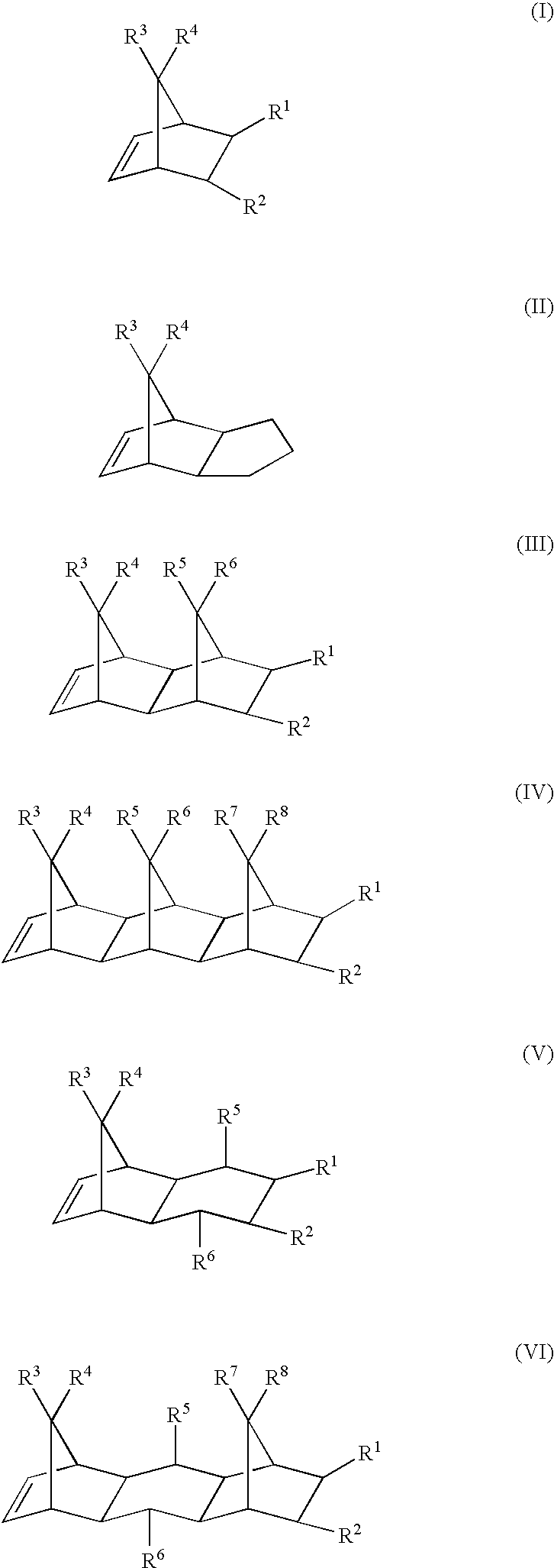White, sealable, thermoformable biaxially oriented and coextruded polyester film with cycloolefin copolymer, process for its production, and its use
a thermoformable, biaxial orientation technology, applied in the direction of flexible covers, magnetic recording, lamination, etc., can solve the problems of inability to reuse production, process uneconomic, and produced with regrinds that cannot gain acceptance, and achieve good thermoformability, good stretchability, and increase the amount of diethylene glycol
- Summary
- Abstract
- Description
- Claims
- Application Information
AI Technical Summary
Benefits of technology
Problems solved by technology
Method used
Image
Examples
example 1
[0097] Coextrusion technology was used to produce a multilayer film of thickness 23 μm with layer sequence A-B, B being the base layer and A being the outer layer. The thickness of the base layer B was 21.5 μm and that of the other layer A was 1.5 μm.
[0098] Chips of polyethylene terephthalate which comprised an amount of 1.25% by weight of DEG (prepared via the transesterification process using Mn as transesterification catalyst, Mn concentration: 100 ppm) were dried at 150° C. to a residual moisture below 100 ppm and fed to the extruder for the base layer B. Alongside this, chips of cycloolefin copolymer (COC) from Ticona: ®Topas 6015 (COC composed of 2-norbornene and ethylene, see also W. Hatke: Folien aus COC [COC films], Kunststoffe 87 (1997) 1, pp. 58-62) with a glass transition temperature Tg of 160° C. were likewise fed to the extruder for the base layer B. The quantitative proportion of COC in the base layer B was 10% by weight.
[0099] 97% by weight of chips of a linear pol...
example 2
[0105] The difference from Example 1 was that now 50% by weight of regrind was added to the base layer B. The amount of COC in the base layer B thus produced was again 10% by weight. No changes were made to the process parameters of Example 1. The outer layer A remained unchanged. The yellowing of the film was observed visually. Tables 2 and 3 show that hardly any yellowing of the film was visible.
[0106] Base layer B is a mixture of: [0107] 44.7% by weight of polyethylene terephthalate homo-polymer having 1.25% by weight of DEG and having an SV value of 800 [0108] 50.0% by weight of regrind (polymer content: 90.7% by weight of polyester including isophthalate+9.3% by weight of Topas 6015) [0109] 5.3% by weight of cycloolefin copolymer (COC) from Ticona, ®Topas 6015
example 3
[0110] The structure of the base layer B was as in Example 1, but its thickness was only 40.5 μm. The sealable outer layer A had a thickness of 2.5 μm. A third pigmented outer layer C of thickness 2.0 μm was also coextruded concomitantly (drying as outer layer A).
[0111] This outer layer C comprised: [0112] 88% by weight of polyethylene terephthalate homo-polymer having 1.25% by weight of DEG and having an SV value of 800 [0113] 12% by weight of masterbatch made from polyester having 1.25% by weight of DEG and having 10 000 ppm of silicon dioxide (®Sylobloc, Grace, Germany) and 12 500 ppm of silicon dioxide (®Aerosil, fumed SiO2 from Degussa)
[0114] The other process conditions were as in Example 1.
[0115] The good whiteness and sealability properties of the film were the same as those of the film from Examples 1 and 2, but it exhibited a further improvement in processing performance. The properties achieved in films produced in this way are shown in Tables 2 and 3.
PUM
| Property | Measurement | Unit |
|---|---|---|
| Temperature | aaaaa | aaaaa |
| Temperature | aaaaa | aaaaa |
| Fraction | aaaaa | aaaaa |
Abstract
Description
Claims
Application Information
 Login to View More
Login to View More - R&D
- Intellectual Property
- Life Sciences
- Materials
- Tech Scout
- Unparalleled Data Quality
- Higher Quality Content
- 60% Fewer Hallucinations
Browse by: Latest US Patents, China's latest patents, Technical Efficacy Thesaurus, Application Domain, Technology Topic, Popular Technical Reports.
© 2025 PatSnap. All rights reserved.Legal|Privacy policy|Modern Slavery Act Transparency Statement|Sitemap|About US| Contact US: help@patsnap.com



